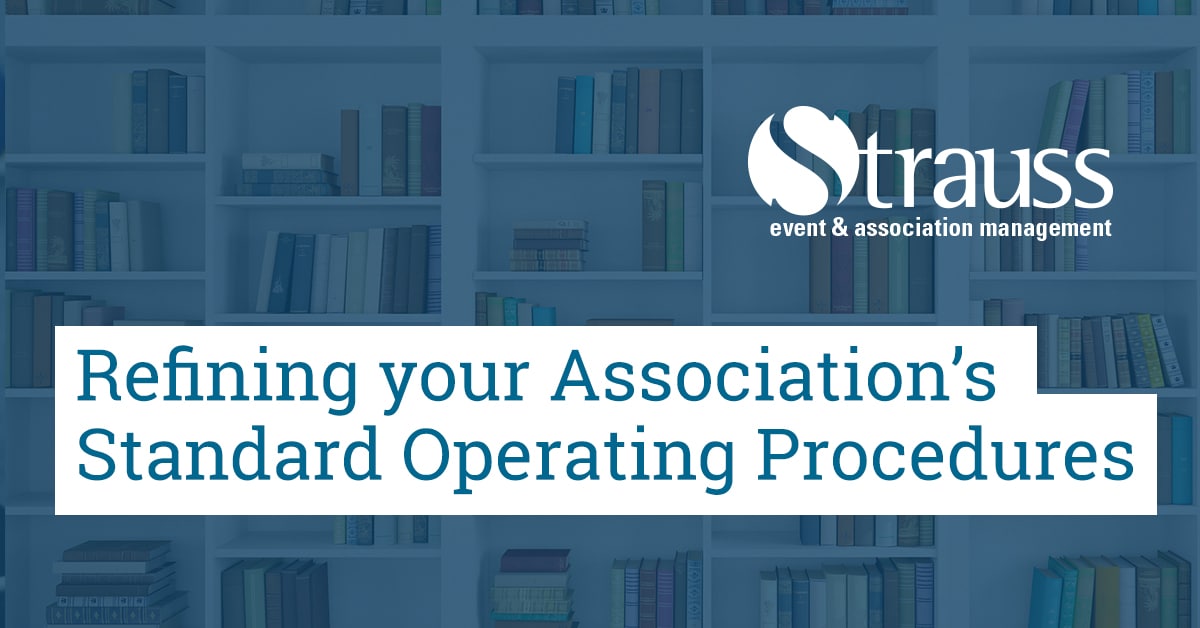Associations frequently rely on Standard Operating Procedures (SOPs) and association task calendars to guide board members and association staff through their work over a calendar year. These pre-established systems to complete tasks throughout the year are a key tool to an association’s success. I recently read a book called Atomic Habits by James Clear; it outlines how our systems can be ultimately hold us back from achieving our goals. It also examines our systems and improves them by even 1%, which leads to large gains in quality and performance. Below are some tips and tricks from Clear’s book which you could adapt and apply to your association role.
Make it Obvious
1.1 Write it down
If your association does not have an SOP, collaborate with your association board members and executive director to create a list of all the major tasks in a calendar year. Until they are on paper, it may not be obvious which tasks must be completed leading up to major events. For more information on creating SOP’s, see my colleague’s article on the importance of standard operating procedures.
1.2 Implementation
Once you have an idea of which tasks must be completed in your SOP, add precision to your association’s plan. “I will [task] at [time] in [Location]”. Adding these precise elements will help you commit to achieving the scheduled tasks in your association’s SOP. Adding precise definitions helps us commit to the structure of our timeline and avoid pushing tasks back.
1.3 Chain the Tasks Together
Clear says that if you group tasks into stacks, they become routines. You will improve efficiency by making a habit of these routines. Make it specific on you SOP “after [current task], complete [new task]”. This can be great for defining routine events, such as managing incoming invoice payments leading into association cheque deposit routines.
1.4 Design your Environment
Make sure that the cues to complete a task are clear and visible. This could be done by laying your SOP’s tasks out into an easy-to-read calendar format or by scheduling calendar reminders to make you stay committed to following through with every procedure in detail.
Make it Attractive
2.1 Bundle a task you enjoy completing with a task that is unpleasant
Chaining positive and negative tasks together can help you push through difficulties in the latter. For example, link opening and filing the days mail with calling late renewing members. You could also bundle listening to your favourite playlist with focusing on a daunting task.
2.2 Join a culture where the desired behaviour is normal behaviour
Perhaps you can befriend an experienced board member or someone in your office with a strong work ethic. Modelling your time spent at work after well structured and organized coworkers will help you succeed in managing your own tasks efficiently and successfully.
2.3 Create a motivation ritual
Clear also recommends filling up a fresh cup of coffee or light a pleasant-smelling candle at your desk before you begin a task you do not enjoy. Pairing rewards with the beginning of a task changes the association with an unpleasant task. This associates your favourite beverage with the task instead of any stress surrounding it. Ultimately you may begin to look forward to this task because it means you get to enjoy something you like.
Make it Easy
3.1 Reduce friction
Try to limit the steps and barriers between you and your ability to complete a task. If you see any issues that prevent you from completing a task, such as a scheduling conflict on a call line, redesign the interaction on another account or platform to remove the barriers that limit you to complete the task or connect with your contacts.
3.2 Prime the environment
Set up your workstation to facilitate the completion of your tasks. If you need to focus on making a series of calls, perhaps schedule a time block in a private room to make it easy to complete the task without interruption. For more on managing your current work -at-home environment, see my colleague’s article on learning to work remotely.
3.3 Automate your tasks
Invest in technology and spend the time automating tasks when possible. If you are setting calendar reminders to begin a given task that repeats every day, week, month, set it as a recurring event. You could also encourage members to set their memberships on autopay to reduce the number you have to contact directly during renewal season.
Make it Satisfying
4.1 Use reinforcement
After you have completed the tasks, give yourself a small reward. This could be as small as a piece of gum to chew, a trip to the water cooler to stretch your legs or a quick chat with a colleague.
4.2 Make accomplishing your work enjoyable
Though completing your work may have direct positive impacts for your employer and clients, it can be sometimes difficult to feel the direct personal gratification of completing a task. Clear recommends gamifying your task list for yourself. You could set up a separate bank account and transfer a small amount every time you complete all the tasks on your list in a day. You could use this fund to treat yourself to a nice lunch or a beverage after work at then end of a productive week.
Conclusion
In summary, utilizing tips from James Clear’s book Atomic habits and examining association procedures and tasks, it’s possible to increase work efficiency and personal motivation. Achieve success not by saying you will succeed, but by focusing on your systems and refining them to the point that success becomes the by-product of the way you operate in your day-to-day tasks and routines.

